China, right now probably the most interesting country on the planet. You have to experience it yourself, and if you don't, then – we promise — you are missing out! Yes, surrounded by a different language and culture, as exciting as it will be, also at times can be overwhelming and challenging. You will experience times when you don't know what's going on. We are there to help you out with every single step of your learning journey. And it will be a rewarding one: if you can only utter a few words, if you can only understand a bit of their culture, the Chinese people already will highly appreciate your attempts and you will find a new world is beginning to open up for you!
CHINA, one of the first ancd longest-running civilizatiens on earth, it has now develaped at record speed to become the second-largest economy in the world.
CHINA, renowned for its Silk Road,the world's longest wall, the Great Wall the 2.000-year-old Terracotta Army, the world's largest ancient palace, the Forbidden City and not to forget the only country that is home to the giant panda. Just to name a few.
CHINA, with its Hazi [pictographic script). the only surviving pictographic writing system in the world, it is often believed to be the hardest language to learn.
CHINA. it takes a bit of time to get to know her, but once you do, you will be surprised by how much you gonna love this amazing country!

Life Now
Read MoreLife Now
About 35 million Chinese live in caves, called 'yaodong': cave dwelling. It is a Chinese architectural style dating back to the stone age. Chinese in many areas appreciate underground and cave dwellings since they are cheaper to build, easier to warm in the winter, and cool in the summer. Especially in Shaanxi Province, cave dwellings are common.
There exists a so-called 'the Elderly Rights Law'. If you have parents that are over 60 years old, it's illegal to not visit them regularly. This is definitely one of the most interesting China facts, since, in many other countries, the elders are being forgotten or put into rest-homes.
In 2007, a Chinese couple seeking a distinctive name for their child settled on the e-mail 'at' symbol (@). A government official cited it as an example of citizens bringing bizarre names into the Chinese language. More than 4,000 Chinese children are named Aoyun, meaning “Olympic Games”.
Rather than enjoying some time at bars and pubs, going to a karaoke place is one of the most popular ways to spend social time amongst the Chinese. There are karaoke houses, or more commonly known as 'KTVs' in many of the big cities in China. In case you have the chance to go there you will get an insulated room that has distorting speakers, microphones, a television, a large central table and couches lining the walls. For sure, you are expected to sing. While you’re entertaining the mass others can have a buffet dinner – all included in the entry price.
Since its launch in 2011, WeChat has become the all-in-one tool for modern China. Before you step foot across China's border make sure to download this app as it is the favored tool of communication for its 980 million active users in China. You can pay your utilities, order food to be delivered, online shop, and call yourself a taxi within the app. You can also search for flats, transfer money to other bank accounts, and find other people who use WeChat using the 'shake' feature.
Payment and information come in a nice, neat little package in China — QR codes. While in the West, these never quite caught on, QR codes are a way of life here, from getting another person's contact information and following a publication you like, to ordering food or paying bills. If you are walking down the street and see a wrinkled old man serving some local Chinese snacks, you can be sure that you will also see a QR code somewhere to scan and pay for his wares over the phone!
China's metro system is impressive, to say the least, now boasting 8 of the world's 15 longest subway systems, half of the world's 10 busiest subways, and subways in a total of 43 cities. Both the Beijing and Shanghai subways have a staggering daily ridership of more than 10 million.
Shanghai now has the longest metro system in the world, with 450 km of track, overtaking the London Underground’s 408km. It took London 140 years to reach this length, Shanghai did it in 20 years. Due to overcrowding on Shanghai Metro Line 8, staff have been employed to push extra people into carriages at peak times.
A number of oddly dressed people have been spotted by Chinese netizens on the Shanghai Metro. In recent years ‘Leopard Print Man,’ a robot, Superman, and an Egyptian mummy have all been spotted riding the subway.
Shanghai is the home of the world's first commercial magnetic levitation train, known as the Maglev. Opened in early 2002 and built by German engineers at a cost of US$1.2 billion, it reaches speeds of 430 km/h and covers the 19 miles distance between Pudong International Airport to the 88-story Jin Mao Tower in downtown Shanghai in less than eight minutes.
Further developments have led to a new Maglev model capable of hitting speeds of 600 kilometers per hour. The sleek-looking train is scheduled to go into commercial production in 2021. It is believed the new Maglev will completely transform China's travel landscape, filling the gap between high-speed rail and air transportation. Take Beijing to Shanghai as an example -- counting preparation time for the journey, it takes about 4.5 hours by plane, about 5.5 hours by high-speed rail, and would only take about 3.5 hours with the new high-speed Maglev.
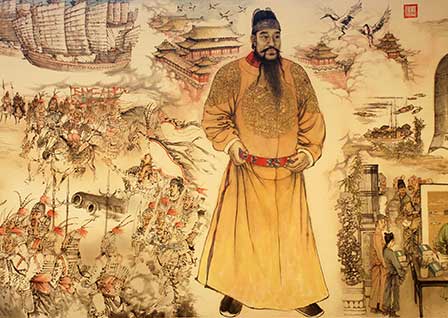
Life Back Then
Read MoreLife Back Then
Hygiene was huge in ancient China as body odor was associated with barbarism. Wealthy women would wear scented bags around their waists, and nobles would need to suck on cloves to combat bad breath before speaking with the emperor. Because these were costly options, the poor had to resort to other methods, like washing your armpits with urine.
The practice of foot binding began in the 900's by female Chinese entertainers. Tightly wrapped bandages gradually break the foot's arch, forcing the heel and toes to grow inward toward each other. This also caused the leg muscles to atrophy and become very thin, but it was seen as highly sexual.
Eunuchs were powerful political players in ancient Chinese government. Originating as trusted slaves in the royal household they were ambitious to use their favoured position to gain political power. Advising the emperor from within the palace and blocking the access of officials to their ruler, the eunuchs were eventually able to acquire noble titles themselves, form a bureaucracy to rival the state’s and even select and remove emperors of their choosing. Their influence on government would result in the falling of dynasties and last right up to the 17th century CE.
Eunuchs, or 'non-men' as they could be known, first appeared in the royal courts of ancient pre-imperial Chinese states where they were employed as servants in the inner chambers of the palace. They were more or less slaves and were usually acquired as children from border territories, especially those to the south. Castrated and brought to serve the royal household, they had no real means of altering their lives. Eunuchs were regarded as the most trustworthy of servants because they could neither seduce women of the household or father children which might form a dynasty to rival that of the sitting emperor’s.
Silk is thought to have been invented in the 4th millenium BC, when the goddess Leizu, wife of the supreme god Shangti, was having tea and a cocoon fell into her cup. As the cocoon unraveled, she saw it was all one thread and so planted mulberry trees for silkworms to spin their webs in to make silk. The nobles and royalty were the only people who could wear silk. Those who processed the silk into clothing, and even the merchants who sold it, were not allowed to wear it. Most of the population of China wore clothing made of hemp.
Chinese women would sew an image of a tiger onto the clothing of their children as a sign of protection. The tiger was thought to be the king of the beasts and its image would ward off evil. Sometimes mothers sewed images of toads or snakes onto clothing along with the tiger to add more protection against danger.
The art of tattooing has been known in China for thousands of years. Tattooing in China is called Ci Shen (Or Wen Shen), a term that means literally 'puncture the body'. Throughout Chinese history tattooing has been seen as a defamation of the body, something undesirable.
The most famous tattoo in Chinese history comes from the legend of the Chinese general Yueh Fei, who served the Song Dynasty. During battle with northern enemies the Field Marshall under whom Yueh Fei served, betrayed the Song and went over to the enemy. In protest Yueh Fei resigned and returned home. His mother grew angry with him, telling him that his duty was first and foremost to his country, no matter what. To remind him of this fact she tattooed four characters on his back with her sewing needle. These characters, jin zhong bao guo, are difficult to translate but mean something like 'Serve his country with ultimate loyalty'.
At some points in Chinese history Chinese tattoos were also used to mark criminals. Criminals convicted of a severe crime would be ordered to have a tattoo printed on their face and exiled into a faraway land. Even should the criminal ever return the tattoo would mark them forever as a criminal.
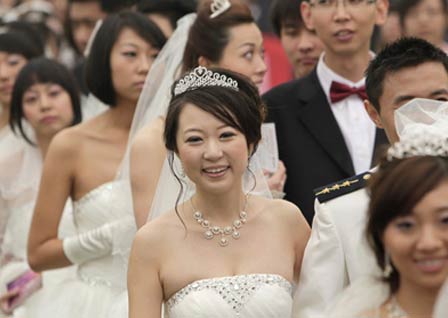
Dating and Marriage
Read MoreDating and Marriage
More so than Westerners, many Chinese view dating as a pragmatic affair. It's not always about finding love so much as it is about finding a potential marriage partner who fits with one’s own ideals. For example, although many men get married without a house and a car, Chinese women will often say that they're looking for these things because that's the sort of person who probably has a stable career and will be able to provide for her and their future children in the long-term
Yes, single men have a hard time making the list if they don't own a house or an apartment, which in cities like Beijing and Shanghai are extremely expensive. And despite the gender imbalance, the pressure is particularly acute for women, who can be stigmatized as 'left-over women' if they pass the age of 26 or 27 without finding a husband. Men can find themselves similarly left-over if they wait too long to get married.
Young Chinese adults are often under a lot of pressure from the elders in their family to find a good husband or wife and get married relatively early. Every parent is different, of course, but in general Chinese parents expect to be more involved in their children's relationships. It’s not uncommon for parents and grandparents to set their children up on blind dates with suitable matches they've found.
In the world's most populous country, online dating has become a profitable industry as 200 million Chinese are eager to find a partner. For every 100 females aged below 24, there are over 110 males; overall, there are about 32 million more men than women in China. Such a skewed sex ratio has developed owing to the decades-long one-child policy and a preference for boys. The gender imbalance has given rise to a huge amount of dating, matchmaking, and relationship counseling services.
Being single can totally suck, especially when you head home for holidays and face an endless barrage of parents' interrogations, such as 'Are you seeing anyone?' 'When are you getting married?' or 'You're a failure.' OK, that last one's not a question. But you can easily shut mom and dad up by renting a lover online and showing off your new, awesome SO. Then you can totally milk sympathy from everyone when you lie and say you got dumped.
In some parts of ancient China, 'pigtails' were associated with a girl’s marital status. A young girl would wear two pigtails, and after marriage, she would wear just one. This may have been a contributing factor to the Western view that pigtails are associated with children and young girls.
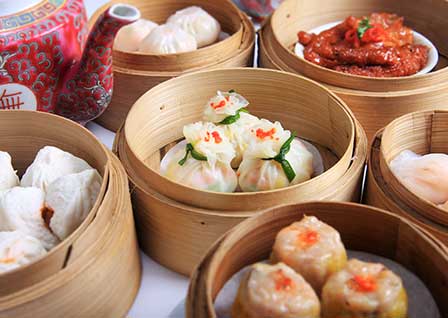
Food Specialties
Read MoreFood Specialties
Ice cream was discovered in China some 4,000 years ago. The Chinese people back then combined milk, rice mixture and snow to create the yummy dessert. It is said that Kublai Khan, the founder of the Yuan dynasty (1271-1368) added preserves and jam to his favorite icy drink, creating the world’s first ice cream prototype. In order to keep the ice cream production process private, he issued a decree that no one except the royal family could make ice cream.
You thought eating bugs or dogs was weird? Try a 'sophisticated' version of boiled eggs: urine eggs, which are boiled for an entire day in the urine of boys under the age of 10. Locals believe they have myriad benefits, such as increasing circulation of the blood.
Ketchup is known to be an American condiment, however, its origins are anything but American. Ketchup comes from the Hokkien Chinese word, 'kê-tsiap', the name of a sauce derived from fermented fish.
Historians speculate that because of the growing population in early China, cooks had to cut food into small bite-sized pieces to allow them to cook quickly and conserve cooking fuel. These small pieces eliminated the need for knives, and eventually lead to the invention of chopsticks.
The first vending machine to sell live crabs debuted in 2010 in a subway station near Nanjing. The machine sells an average of 200 live crabs a day—with prices ranging from 15 to 50 yuan (about $2-7 depending on size). A sign next to the machine guarantees each crab will come out alive, offering compensation of three live crabs for every dead one that pops out.
And talking about machines; Covid-19 has lead to the world’s first a face-mask vending machine.
In Chinese, there is a specific name for the starch or carb component of a meal, called zhu shi (主食). Zhu means main or primary and shi means food, and the zhu shi of a meal typically provides the bulk of calories. This is usually food made from grain (wheat or rice as most common) such as steamed buns, noodles, steamed or fried rice, or starchy root vegetables such as potatoes or yams.
The closest English translation for zhu shi is 'staple food', but there are some important differences in linguistic usage. 'Staple food' is a more academic term and describes a broader category of food, whereas zhu shi is quite common in everyday Chinese speech. A daily exchange in a Chinese home, when preparing dinner, might be 'What will we eat as the zhu shi?' whereas in English, you would hardly hear people say 'Which carb should we eat?' and even less conceivable, 'What kind of staple food do you want to eat tonight?'
Hot or warm drinking water is more common than cold water in China, and iced water is especially rare. Main factor for this practice is that it is a prevalent Chinese belief that drinking warm water is better for the digestive system and overall health. Boiling water also is a sanitation measure, to kill bacteria that may be in tap water.
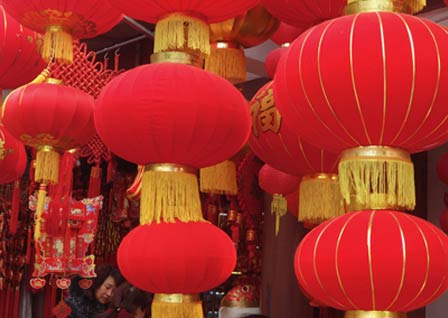
Chinese Festival
Read MoreChinese Festival
Chinese New Year
Chinese New Year, also called Spring Festival, is the most important festival to Chinese people. It is time for families to be together and a week of an official public holiday. As the most colorful annual event, the traditional Chinese New Year celebration lasts longer, up to two weeks, and the climax arrives around the Lunar New Year's Eve. Many activities are held to celebrate the festival, such as dragon dances, setting off firecrackers, making dumplings, etc.
The Spring Festival marks a new year on the lunar calendar and represents the desire for a new life. It is called the Spring Festival in China, because it starts from the beginning of Spring and marks the end of winter and the beginning of spring.
The date of the Chinese New Year is determined by the lunar calendar: the holiday falls on the second new moon after the winter solstice on December 21. Thus, each time the New Year in China falls on different dates of the usual Gregorian calendar, between January 21 and February 20.
Every street, building, and house where Spring Festival is celebrated is decorated with red. Red is the main color for the festival, as red is believed to be an auspicious color. Red Chinese lanterns hang in streets; red couplets are pasted on doors; banks and official buildings are decorated with red New Year pictures depicting images of prosperity.
From 0:00 to 0:30 and even later there would be loud bangs of firecrackers. Chinese people have by long tradition set off firecrackers, originally to scare away the legendary monster Nian which emerges at midnight. In recent years, many urban areas have a firecracker ban or set special area or period for fireworks, to prevent accidents and threats to air quality.
Home is the principal focus of the Spring Festival: Chinese New Year (Lunar New Year) is a time for families to be together. Chinese New Year's Eve is the most important time. Wherever they are, people are expected to be home to celebrate the festival with their families.
The Chinese New Year's Eve dinner is called 'reunion dinner', and is believed to be the most important meal of the year. After reunion dinner, families normally sit together to watch the Spring Festival Gala, one of the most watched TV shows in China. At the same time, most people send WeChat red envelopes or short messages to acquaintances by phone.
With the popularity of instant messaging apps, greeting cards are seldom seen. From the morning to the midnight of the New Year's Eve, people use the app Wechat to send various text messages, voice messages, and emojis, some of which featuring the New Year's animal sign, to exchange greetings and good wishes.
Like at Christmas in other countries, people exchange gifts during the Spring Festival. In rural areas and for older people the New Year gift giving tradition is still strong, but increasingly younger people prefer just to receive red envelopes (by hand or electronically), having money in. WeChat even has its own red envelope button. Red envelopes are believed to bring good luck because they are red.
Lantern Festival
Celebrated on the 15th day of the first Chinese lunar month, the Lantern Festival traditionally marks the end of the Chinese New Year (Spring Festival) period. Billions of lanterns and giant lantern and drone displays makes the time festive.
In the beginning of the Eastern Han Dynasty (25–220), Emperor Hanmingdi was an advocate of Buddhism. He heard that some monks lit lanterns in the temples to show respect to Buddha on the fifteenth day of the first lunar month.Therefore, he ordered that all the temples, households, and royal palaces should light lanterns on that evening.
Lantern Festival is the first full moon night in the Chinese calendar, marking the return of spring and symbolizing the reunion of family. People will go out to look at the moon, send up flying lanterns, fly bright drones, have a meal, and enjoy time together with family and friends in parks and natural areas.
Eating tangyuan is an important custom of the Lantern Festival. Tangyuan ('soup round'), ball-shaped dumplings, are made of glutinous rice flour and are stuffed with different fillings such as white sugar, brown sugar, sesame seeds, peanuts, walnuts, rose petals, bean paste, and jujube paste or a combination of ingredients. They are usually sweet.
Qingming
Qingming Festival, also called Tomb Sweeping Day or Pure Brightness in English, usually falls on April 4 or 5. People commemorate and show respect to their ancestors by visiting their graves, offering food, tea or wine, burning incense, burning or offering joss paper (representing money), etc. They sweep the tombs, remove weeds, and add fresh soil to the graves. They might stick willow branches, flowers, or plastic plants on the tomb.
It is also a time for Chinese people to go outside for a picnic to enjoy the picturesque greenery of spring. Qingming is also called Taqing Festival. Taqing ('tread green') means a spring outing. The festival usually falls on a day not long before everything turns green in the north, and well into the spring flower season in the south. It marks the beginning of the season when people spend more time outside as the weather warms up.
There are various popular activities for Qingming Festival. Apart from the tomb upkeep and repair, spring outings, kite flying, and putting willow branches on gates and front doors have been an important part of this festival since the beginning.
People believe that wearing soft willow branches and or place the branches on gates and front doors will ward off wandering evil spirits during Qingming. That willows are considered magical is mainly a Buddhist influence. According to historical records, there is an old saying: 'Put willow branches up on gates; drive ghosts away from houses.'
Sweet Green Rice Balls (‘green dumpling(s)') are a popular Qingming food that are made of a mixture of glutinous rice powder and green vegetable juice and stuffed with sweetened bean paste. Sweet green rice balls are jade-green in color, glutinous in taste, and sweet in aroma.
Dragon Boat Festival
Dragon Boat Festival, also known as Duanwu Festival, is a traditional and important celebration in China. Dragon Boat Festival falls on month 5 day 5 of the Chinese lunar calendar (around mid-June). The most popular and representative activity of Dragon Boat Festival is dragon boat racing.
It's a traditional festival full of traditions and superstitions, maybe originating from dragon worship. The wooden boats are shaped and decorated in the form of a Chinese dragon. Its length generally is about 20–35 meters in length and it needs 30–60 people to paddle it. During the races, dragon boat teams paddle harmoniously and vigorously, accompanied by the sound of beating drums. It is said that the winning team will have good luck and a happy life in the following year.
Dragon boat racing is said to originate from the legend of people paddling out on boats to seek the body of patriotic poet Qu Yuan (343–278 BC), who drowned himself in a River. As the legend says lumps of rice were thrown into the river to stop fish eating his drowned body.
No wonder Zongzi, representing these lumps of rice, is the most traditional Dragon Boat Festival food. They are a kind of sticky rice dumpling made of glutinous rice filled with meats, beans, and other fillings. Zongzi is wrapped in triangle or rectangle shapes in bamboo or reed leaves, and tied with soaked stalks or colorful silky cords.
Double Seventh Day (Valentine's Day)
The Double Seventh Festival (Qixi Festival) is also known as a Chinese Valentine's Day. Double Seventh Day falls on the 7th day of the 7th month of China's lunar calendar (around mid-August), that’s why it is called Double Seventh Day.
The Festival is based on a romantic legend about a weaver girl Zhinü and an ox herd Niulang. Their love was not allowed, thus they were banished to opposite sides of the Silver River, symbolizing the Milky Way. Once a year, on the 7th day of the 7th lunar month, a flock of magpies would form a bridge to reunite the lovers for one day.
Though in Chinese cities, Western Valentine's Day is now more popular than Qixi with young people, the romantic legend of Niulang and Zhinü has taken deep root in the hearts of Chinese people. It probably always will be told from one generation to the next.
Mid-Autumn Festival
The Mid-Autumn Festival is also called the Moon Festival or the Mooncake Festival. It traditionally falls on the 15th day of the eighth month in the Chinese lunar calendar, which is in September or early October in the Gregorian calendar.
The Mid-Autumn Festival is the second most important festival in China after Chinese New Year. Chinese people celebrate it by gathering for dinners and lighting paper lanterns.
The common customs of the Mid-Autumn Festival include family members eating dinner together, just like a Thanksgiving dinner, sharing mooncakes ('moon-cake(s)', worshiping the moon with gifts, displaying lanterns, and regional activities.
In the past, the Moon Festival was celebrated at harvest time. Ancient Chinese emperors worshiped the moon in autumn to thank it for the harvest. Mooncakes were a kind of offering to the moon. They are named after the moon goddess (Chang'e), who is said to make this kind of cake. The ordinary people took the Mid-Autumn Festival to be a celebration of their hard work and harvest. Nowadays, people mainly celebrate the Moon Festival as a time for family reunions.
In Chinese culture, roundness symbolizes completeness and togetherness. A full moon symbolizes prosperity and reunion for the whole family. Round mooncakes complement the harvest moon in the night sky at the Mid-Autumn Festival.
Mooncakes typically measure around 5 to 10 cm (2 to 4 inches) across and up to 5 cm (2 inches) deep. Most mooncakes have a pastry skin enveloping a sweet, dense filling. Mooncakes are usually eaten in small wedges during the festival, and shared by family members. They are generally served with Chinese tea, and, very rarely, mooncakes are served steamed or fried

Cluture and Beliefs
Read MoreCluture and Beliefs
Number 4 sì (四, sì) is the unluckiest Chinese number because it sounds like the word for 'death' (死, sǐ).
Many buildings in China don't have the 4th floor; some skip any floors with the number, such as 14, 24, 34 and all 40th floors.
Number 8 bā (八, bā) is the luckiest Chinese number because it sounds like the word for 'wealth' (发, fā). 88 is considered particularly lucky because it symbolized the 'double happiness' characters. Anyone else excited to live to be 88?
The phoenix is the most important bird in Chinese legend and represents the feminine power of the empress. The graceful crane is the second most important bird in Chinese legend, which is a symbol of long life. Ducks are also important symbols and represent happiness and marital faithfulness. One of these things is not like the others!
Every culture has superstitions around gift-giving, and China is no exception. One such superstition is tied an umbrella (伞 sǎn). Don't give someone an umbrella, as the Mandarin and Cantonese words for these objects sound like the word 散 (sàn) which means to part ways.
Another taboo is to give someone a clock or watch (送钟, sōng zhōng), since the phrase has the same pronunciation in both Mandarin and Cantonese as 送终 (sōng zhōng)--to care for a dying elderly person or attend a funeral! Giving someone a clock implies that you are waiting for them to die, which is probably not the message you want to send.
Feng Shui, literally translated as 'wind 风 fēng and water 水 shuǐ', is a Chinese tradition going back thousands of years. It is closely associated with the Daoist tradition as it is concerned with living in harmony with nature. The principle is: position everything for maximum harmony.
According to Feng Shui a house should be oriented to catch the sun and avoid cold winds. An ideal house is placed in the landscape and will be facing south, in front of a bend in a river with a hill behind it. The Forbidden City is the supreme example of this. The location chosen lacked a 'hill' to the north, so this was built artificially and stands as Jingshan 'Coal' hill to this day. The 'Golden River Stream' was channeled to run in a loop south of the main complex of buildings
Feng Shui consultants are still used in China and around the world to advise on correct positioning and alignment of new buildings as well as layout of houses and gardens. Traditionally it has its highest importance for determining the most auspicious site for burials; this was because the spirits of the dead are considered particularly sensitive to placement.
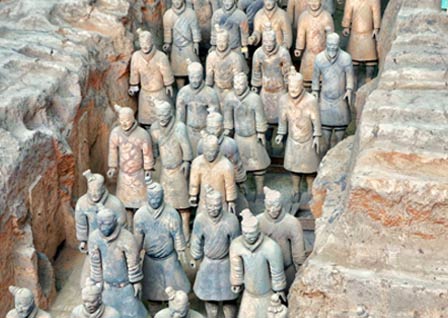
Dynasty Highlights
Read MoreDynasty Highlights
China’s first dynasty was the Qin dynasty (221 to 206 BC) named after Emperor Qin Shi Huang who united the various states into one China. Its 15 years was the shortest major dynasty in Chinese history, consisting of only two emperors, but inaugurated an imperial system that lasted from 221 BC, with interruption and adaptation, until 1912 AD. The dynasty name Qin is thought to be the origin of the European name for China: Qin is pronounced Chin.
In 1974, a group of farmers digging for a well in the Shaanxi province uncovered some bits of very old pottery. They discovered the tomb of Qin Shi Huang. The tomb contained thousands of amazing life-sized terracotta soldiers, horses, and chariots and are now known as the famous Terra Cotta Army.
Qin Shi Huang also was the one who connected the various stretches of boundary walls and fortifications turning them into the Great Wall of China. The Great Wall, the largest man-made project in the world, erected to protect the territories of ancient Chinese states against the nomadic tribes from the northern steppe. This long wall, just like a gigantic dragon, winds up and down across deserts, grasslands, mountains and plateaus, stretching approximately 21,196 kilometers from west to east of China. Most of the wall as it stands today was built during the Ming dynasty.
The Han Dynasty (202 BC - 220 AD) is often referred to as the golden age in the history of China where literature, philosophy, poetry and art flourished. The vast majority of Chinese people today refer to themselves as Han after the Han Dynasty. This is the largest ethnic group in the world.
The city of Chang'an was the capital of the Western Han Dynasty. This city was immense spanning 13.5 square miles (35 square kilometers) with a population in the hundreds of thousands. It was approximately 3 times as large as the city of ancient Rome which was flourishing at the same time in history.
The Ming Dynasty (1368 - 1644) was the last dynasty of ancient China to be ruled by the Han Chinese. An interesting fact is that during the Ming Dynasty, the capital city changed four times between Beijing and Nanjing. The Ming Dynasty is famous for its beautiful blue and white porcelain vases which often have beautiful dragon or floral designs. These pieces have become very valuable collector items.
The Forbidden City was built during the Ming Dynasty. Located in the center of Beijing it served as the Chinese imperial palace and the center of Chinese government for several dynasties. This amazing place covers over 180 acres on which 980 buildings stand. The Forbidden City was named so because commoners were forbidden from entering the gates and laying eyes on the emperor. Any commoner who saw the emperor was killed.
The Grand Canal, the oldest and longest man-made canal in the world is 1,794 kilometers (1,115 miles) long with a history of over 2,500 years. It starts at Beijing in the north and ends at Hangzhou in the south. During the Ming dynasty it was almost completely restored.
The last Chinese dynasty was the Qing Dynasty which ended in 1911 with the Chinese Revolution (Xinhai Revolution) which resulted in the formation of the Republic of China.The last emperor of China was Puyi. He was the last ruler of the Qing Dynasty. An interesting fact is that he became ruler when he was three years old.
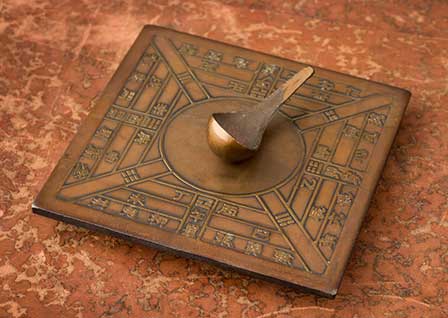
Chinses Inventions
Read MoreChinses Inventions
Most people know China's Four Great inventions papermaking, the compass, gunpowder, and printing. The list below contains these and other inventions in China, it will amaze you.
Paper is possibly one of the most important inventions of all time. Records show that paper existed in China as early as 105 AD. The oldest piece of paper was found in China and dates back to the first or second century. The paper back then was so durable (the reason why this piece survived so long), it was used as a material for clothing, and even sometimes light armor. The technology would later spread to Europe via the famous Silk Road. By the way, toilet paper was also invented in China, but back then it was only made available to Emperors.
The world's oldest surviving book is Chinese, a Buddhist text called the Diamond Sutra, which bears the date 868 AD. Along with other printed manuscripts, the book was discovered in 1907 in a walled-up cave in Dunhuang (north-west China) and is on display at the British Library.
The Chinese were the first in the world to use paper money, during the Tang Dynasty in the 7th century. Its use evolved from merchant receipts of deposit and was widely printed by the government after a copper shortage.
The magnetic compass was first invented as early as the Chinese Han Dynasty (202 BC – 220 AD). These early compasses were made from lodestone which is a naturally magnetized iron ore. These devices were later used for navigation during the 11th Century Song Dynasty. Lodestone was replaced with iron needles that were magnetized by striking with some lodestone. The first usage of a compass recorded in Western Europe and the Islamic world occurred around 1190. The compass would drastically improve sea trade and was a prerequisite to the later Age of Discovery.
Another incredibly crucial Chinese invention was the development of gunpowder. Interestingly, it was discovered completely by mistake in, or around, 1000 AD. Chinese inventors were attempting to develop an elixir for eternal life. The result, as it turned out, would be a substance that would prematurely end countless lives throughout history. Like other Chinese inventions, it was eventually introduced to Europe sometime later. It is widely believed this occurred with the Mongol invasion of 1200-1300 AD
One of the most important inventions of all time was the development of print. The earliest example comes from a Tang tomb near Xi'an in China.This delicate manuscript consisted of a woodblock printing on a piece of hemp paper that dates to around 650 to 670 AD. The movable type would also appear in China sometime around 1088 AD. It would be another four centuries before the technology would be introduced to Europe thanks to one Johannes Gutenberg. It would literally transform the balance of power and control of information forever.
The Chinese invented kites about 3,000 years ago, and they were used for a multitude of reasons: from scaring enemies on the battlefield to predicting the success of a voyage. Also, it was considered bad luck to intentionally let go of a kite.
The Crossbow is symbolic of battlefields of the middle ages. But they were actually a Chinese invention from almost 2.5 millennia ago. It was invented in China as an answer to heavily armored troops. The Chinese were also using chemical and gas weapons some 2,000 years before they were used in Europe during the first world war.
The Chinese invented eyeglasses over a 1,000 years ago, according to British scientist and historian Sir Joseph Needman. By the time Marco Polo arrived in China around 1270, eyeglasses (which he mentions in his accounts) were widely used in the Chinese upper class. It looks like another one for ancient China.
The Chinese invented the world’s first seismometer (earthquake detector) in 132 AD, using a large bronze vessel with eight dragon’s heads that held bronze balls. During an earthquake, the earth's movement would cause a ball to fall, indicating the direction of the quake.
Silk, one of the oldest fibers, originated in China as early as 6,000 years ago. The earliest evidence of silk was discovered at Yangshao culture site in Xiaxian County, Shanxi Province, China where a silk cocoon was found cut in half, dating back to between 4000 and 3000 BC. Chinese people mastered sophisticated silk weaving tech and closely guarded secret, and the West had to pay gold of the same weight for the silks. In ancient times the silk was a very important item made in China and for many centuries businessmen transported this precious item from China to the West, using the famous Silk Road.
Porcelain is a great invention of ancient China. The earliest porcelain emerged in Shang Dynasty (1600– 1046 BCE) and matured during the Tang Dynasty (618- 906). During the Song Dynasty (960–1279), porcelain production technology reached an unprecedented height due to its focus on shape and the tactile experiences of the glaze. Chinese porcelain was highly prized in the world and many artworks had been introduced to the West through the Silk Road.
According to old Chinese legend, tea was first discovered by Shennong, Chinese Father of Agriculture, around 2,737 BC. In the Tang Dynasty (618-907) tea became a popular drink enjoyed by all social classes. Cha Jing (or The Book of Tea), written by Lu Yu in the Tang Dynasty, explicated ways to cultivate tea, tea drinking and different classifications of tea in details. The book is considered as the world’s first monograph about tea. And the world’s oldest and largest living tea tree can be found in Lin Cang, China, about 3,200 years old.
The oldest Chinese medicine book 'Neijing', also known as 'The Classic of Internal Medicine of the Yellow Emperor', shows that acupuncture was widely used as a therapy in China much before the time it was written. Besides, various kinds of acupuncture needles were discovered in the tomb of Prince Liu Sheng who died around 200 BC. This is a further proof that acupuncture were already in use in China more than two thousand years ago
And nope, football (soccer) was not invented in Europe. The first recorded information about the sport was 2,200 years ago in China during the Han Dynasty. The sport was refined during the Tang Dynasty (618–907) and Song Dynasty (960–1279). Professional players entertained the imperial court. The world's first soccer ball was made of leather. The ball was filled with feathers and hair and the sport was original called 'Ti Zu Qiu', which means 'kick the ball with foot'. Later, it spread to neighboring countries like Japan, Korea, and Vietnam, and eventually Europe, leading to what we know today as soccer
Finally, Fortune cookies are not an original Chinese invention or tradition. They were invented by a noodle factory worker in the 1920s, in San Francisco. We guess you could say fortune cookies are a traditional American custom. This is contrary to what many people think.
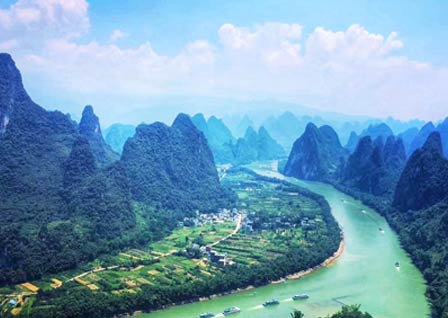
Geography
Read MoreGeography
China is the third largest country in the world with a total area of 9,596,961 km2, bordering 16 nations, more than any other country - Vietnam, Laos, Myanmar, India, Bhutan, Nepal, Pakistan, Afghanistan, Tajikistan, Kyrgyzstan, Kazakhstan, Russia, Mongolia, Hong Kong, Macao and North Korea.
Chongqing is the world's largest city with a population of over 30 million, followed by Shanghai with 26 million, while Beijing is third with 21½ million.
China has over 100 cities of over 1 million people, compared to India and USA that have just over 50 urban areas (not individual cities) with over one million people each. Furthermore, China has 28 cities with a population of over 3 million and 10 cities with an urban area population of over 10 million.
In 1949, just after the Chinese Civil War, the Communist Party of China made the country have a single time zone in an effort to help unify the country. Rather than having the country split into 5 timezones it chose to use Bejing time (UTC+08:00).
China is one of the countries with the greatest temperature differentials. Parts of China can see temperatures as low as -41C and other parts as high as 50C. There are a few cities fighting over the number one spot for the hottest city in China. Hangzhou, Hong Kong and Taiwan can all reach 40 degrees in summer – far too hot for a sunbathing! Harbin, also called 'Ice City', freezes for four months a year. The average low in January in Harbin is -25°C (-13°F). A tourist highlight is the Harbin International Ice and Snow Festival, the biggest ice festival in the world, which attracts 10 to 15 million visitors annually. Huge snow sculptures can exceed 600,000 square meters each.
The Gobi desert, China's biggest desert, is the 3rd largest desert in the world. It is found in the North of China bordering Mongolia. It has an impressive history. Many travellers, traders and even armies have passed through it despite its dangers. Genghis Khan launched many of his largest attacks on China by travelling from the Steppes in Mongolia and through the Gobi desert.
China is a vast country with many mountains. Some are scenic and magnificent, while some are related to religion and culture. The Five Great Mountains (Wu Yue) are most famous in this respect, as the saying goes 'once you have seen the Five Great Mountains there is no need see other ones - 五岳归来不看山'. Funny thing, however, that they have the same saying for Huangshan translated as the Yellow mountains. Named so not for its color but for the eighth-century Yellow Emperor (Huangdi) who, according to one legend, ascended to heaven from its dramatic peaks. The mountain is a ubiquitous symbol appearing on banknotes and in paintings hung in homes and businesses throughout the country.
The Yangtze is the longest river within a single country and the third longest in the world: 6,300 km (3,915 miles), only being beaten by the Nile and the Amazon. Its source in the Himalaya's is the highest of any world's major rivers. The river also hosts the world's biggest hydroelectric station and dam: the Three Gorges Dam, which produces a gigantic 22 gigawatts of power.
The Three Gorges is one of the best sights along the Yangtze river. With luscious green covered Gorges set in a subtropical climate, it looks like it could belong in a scene from Pirates of the Caribbean. As well as natural beauty the Three Gorges is home to the impressive Three Gorges Dam. The dam is the worlds largest power plant.
The Yellow River, second longest river in China, fifth in the world at 5,464 km (3,395 miles), also known as the mother of China, or 'Mother River', is said to have been the birthplace of ancient Chinese civilisation. It travels through 9 provinces and ends in the Bo Sea. It is also the deadliest river in the world. It has killed millions with flooding, and holds the record for worst natural disaster in human history (the 1931 Flood killed over a million).
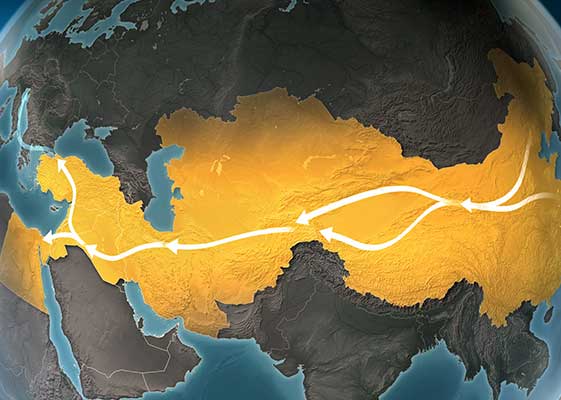
The Silk Road
Read MoreThe Silk Road
In 139 BC, in a search for allies in the far west, Emperor Wudi (156–87 BC) of the Han Empire sent Zhang Qian (200–114 BC) as an embassador to Central Asia, and they realized that trade and travel would be profitable and beneficial. It was the beginning of the famous Silk Road.
The Silk Road began over 2,100 years ago, linking China with the West, carrying goods and ideas between the two great civilizations of that time, Rome and China. Silk went westward, and wools, gold, and silver went east. China also received Nestorian Christianity and Buddhism (from India) via the Silk Road.
The Silk Road was the longest ancient overland trade route. Originating at Xi'an (Sian), the 4,000-mile (6,400-km) road, actually a caravan tract, followed the Great Wall of China to the northwest, bypassed the Takla Makan Desert, climbed the Pamirs (mountains), crossed Afghanistan, and went on to the Levant; from there the merchandise was shipped across the Mediterranean Sea.
The Silk Road only got its name in the 19th century. In 1877, Ferdinand Van Richthoten, a prominent geographer who worked in China from 1868 to 1872, coined the term 'Silk Route' while making a Silk Road map, because the Chinese mainly traded silk.
The discovery of a sea route from Europe to Asia in the late 15th century dealt a damaging blow to the Silk Road trade. With less cost, harassment and danger, many goods and materials that the Silk Road could not transfer were conveyed through the sea route. Besides, the Persians had mastered the art of sericulture and the import of the silk from the East was reduced. Since then, the prosperous Silk Road was on its downhill. The bustling streets, wealthy cities and solid ramparts now were submerged in the vast desert, and today, people can only trace their splendid history in the endless ruined and dilapidated remains.
Since 2013 China has started initiatives to rekindle the historical Silk Road. This billion upon billion dollar investment is meant to create modern infrastructures in areas less trodden and open up vast opportunities. With the One Belt, One Road initiative, China is linking up the Silk Road and the Maritime Silk Road to create connections with more than 60 countries along its path.
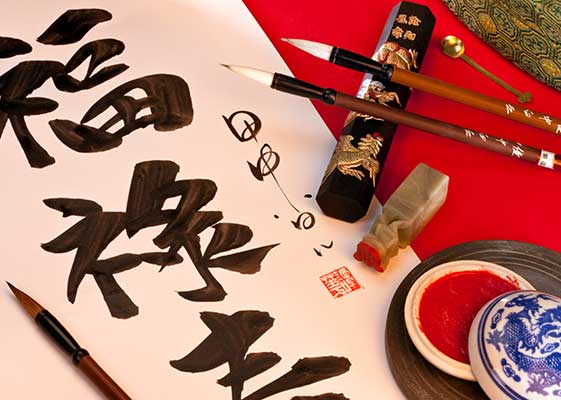
Language and Characters
Read MoreLanguage and Characters
Why is Chinese called Hanyu 汉语 and its character script Hanzi 汉字? The names stem from the river Han 汉. The area around the river Han became the centre of China’s first golden dynasty, the Han Dynasty (202 BC – 220 AD). Indeed, also the name of the Han Dynasty originates from the name of this river as is the name of the ethnic group Han.
China’s people consist of 56 ethnic groups. About 93% of the population are Chinese Han people. The non-Han chinese only occupies 7%. So the other ethnic groups also called minorities (Shaoshu Minzu – 少数民族).
Chinese characters, also known as Hanzi (汉字) are one of the earliest forms of written language in the world. And though the Chinese script is not the oldest known script however (which is the Cuneiform script from about 5,500 years ago, used in Mesopotamia, present day Iraq and Iran) it now is the longest lived script still in use in the world.
The written script in China can only be traced back with certainty to the oracle bones of about 1,200BC. However the script had a considerable vocabulary and signs of simplification at that date which strongly suggests the script's origin goes back much further, probably some 4.000 years. Over time, Chinese history has crystallized in the form of the roughly 50,000 characters that make up modern Chinese script.
There are some 50.000 Chinese characters in the Kangxi Dictionary (康熙字典), the standard national dictionary developed during the 18th and 19th centuries, but the precise quantity of Chinese characters is a mystery; numerous, rare variants have accumulated throughout history. Studies have shown that 90% of Chinese newspapers and magazines tend to use 3,500 basic characters.
